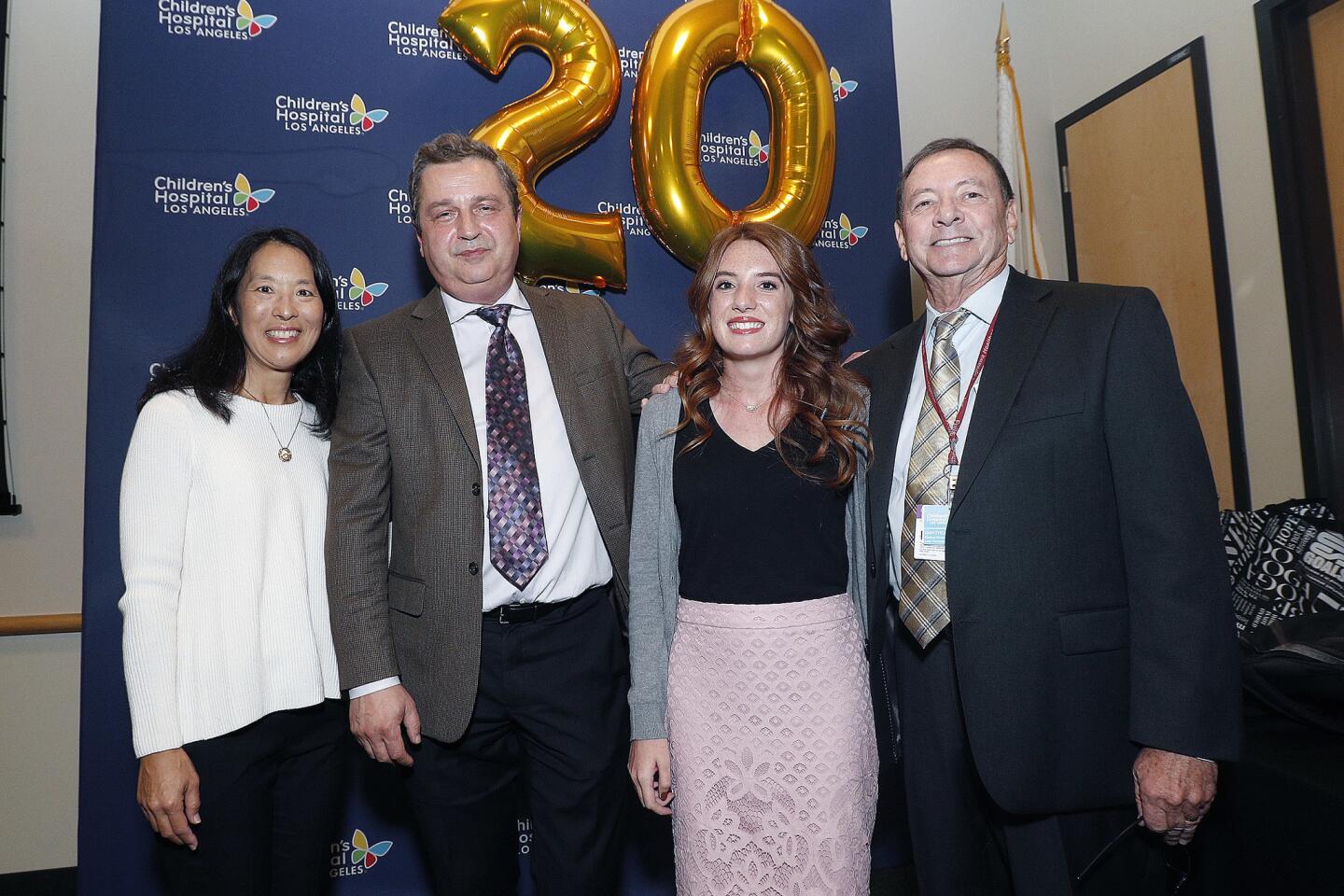Glendale resident honored for co-founding liver transplant program
- Share via
The day before 6-month-old Lydia Hand was to receive a living-donor liver transplant, a junior medical student exclaimed that she didn’t know Children’s Hospital Los Angeles, or CHLA, performed that type of procedure — in front of Hand’s family.
In one of several leaps of faith that made CHLA’s program possible, Hand’s grandmother, who was also the donor, told program co-founder Dr. Daniel Thomas, “I believe in your team.”
That was in 1998, the year the then-nascent program performed its first living-donor transplant, which requires the donor to sacrifice a part of their liver to be implanted into an infant or child. Dr. Yuri Genyk, the current surgical director at CHLA, had just arrived from Mount Sinai Hospital in New York City, where he had learned the procedure.
“And things turned out so well,” Glendale resident Thomas said during an event Friday afternoon at the hospital, celebrating the 20th anniversary of the program.
Now 20 and studying at West Coast Baptist College, Hand, along with several other patients and their families, was at the celebration that honored Thomas and Genyk.
They “held our hand[s] the entire time” throughout the procedure, “and I guess we held theirs, too,” Hand told attendees, referring to the mutual-learning experience of being one of the program’s first patients.
Two decades later, the program’s team has performed about 325 pediatric liver transplants and roughly 100 living-donor transplants.
“Each life is different, and each life has an impact,” Thomas said. “We learn something about each of our patients that teaches us something new.”
According to Thomas, the Southern California program has a higher success rate, 95%, than the national rate of 90%.
He partially attributes the edge to the fact that the CHLA team performs complex surgeries, such as living-donor transplants, that allow patients to get a liver before potentially passing away while waiting for a cadaver’s organ.
The program has a waiting list of 20 to 30 patients at any given time, with waiting times averaging two to three months, Thomas said. Some other programs have waiting lists that stretch years, he added.
A talented surgeon is only one factor in a successful recovery— patients need a strong support system, “and lot of it has to come from within yourself,” Thomas said.
He said he learned the triumphs and tribulations of being a grievously ill patient himself when, in 2013, he contracted an autoimmune disorder known as Guillain Barre.
The disorder causes the immune system to attack the nervous system, severing communicative function between the brain and the body. With no signals going between the two, paralysis sets in, often starting with the legs.
It was “sudden, unexpected, acute, disabling,” Thomas said. Like many of his patients, he was on death’s door.
With every muscle immobilized, Thomas was put on a ventilator, followed by a stint in the intensive care unit. It took two years of rigorous physical therapy at Adventist Health Glendale, then known as Glendale Adventist Medical Center, to relearn to walk, talk and eat. In 2016, he returned to work at CHLA.
Now, when Thomas feels a patient may need additional motivation in their recovery, he shares his own story.
“Hopefully, that serves as an inspiration to them,” he said.
It also serves as inspiration for his colleagues, said Paul Viviano, CHLA’s chief executive, during the anniversary event.
Viviano added that the 20-year commemoration was “as much about looking forward as looking back.”
The anniversary event coincided with the CHLA liver transplant program signing an agreement with its sister program at King’s College of London, England, in which the two institutions’ fellows and faculty will participate in an exchange program.
Twitter: @lila_seidman













